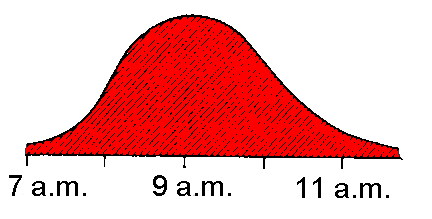Insulin preparations can be classified depending on the duration of their action.
Regular insulin is sometimes called short-acting insulin or soluble insulin.
Long-acting insulin is sometimes called basal insulin or delayed action insulin.
|
1. Regular insulin
Regular insulin has an effect which comes on rapidly but lasts for only a short time.
Action characteristics:
Onset of action: ½ to 1 hour after injection.
Peak activity: 2 to 3 hours after injection.
Duration of action: 4 to 6 hours after injection.

When this kind of insulin is injected at 7 a.m., the effect will look like this.
|
Regular insulin is given whenever a rapid insulin effect is required.
Regular insulin is used in emergencies, e.g., diabetic ketoacidosis.
Regular insulin can also be combined with long-acting insulin.
Regular insulin can be mixed in the syringe with any other kind of insulin.
However, insulins used for this purpose should always be of the same species (i.e., either human
insulin or porcine insulin) and should be from the same manufacturer.
Click here to
simulate an example case using this type of insulin
|



